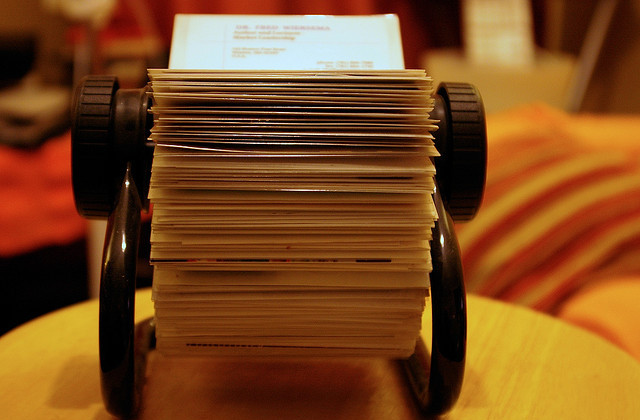Big Data – even if you don’t follow technology trends particularly closely, chances are you’ve heard the term. In fact, if you’ve been reading the mainstream media over the last couple of years, it’s been hard to avoid.
Several high-profile big data projects have garnered a disproportionate amount of ink, like Google’s Flu Trends project or the Obama Administration’s Big Data Initiative. But there are many other exciting big data initiatives underway in fields as diverse as farming and counter-terrorism that are likewise worthy of our attention.
The nonprofit sector is no exception. Many organizations are contemplating how big data can give them actionable insights into some of the more serious social, political, and environmental issues the world is facing today. In the meantime many interesting projects are well underway and beginning to make an impact, such as SumAll.org’s project to fight homelessness in NYC and Google’s initiative to end human trafficking.
But what about the vast majority of nonprofits who obviously lack the resources of the likes of Google? Are big data initiatives possible, and can they help your organization make better data-driven decisions that have measurable outcomes? And if so, how?
What is big data?
Before we talk about what big data can do for you, let’s start with a quick primer. What exactly is big data, anyway?
At its core, big data refers to data sets that are so large and complex that they cannot be managed and meaningfully interpreted using conventional tools. But it’s not only about the size and complexity – what makes big data interesting and potentially revolutionary are the deep insights we can get by analyzing it, and the important decisions we can make based on these insights.
Big data experts often talk about the three Vs of Big Data: volume, velocity, and variety. Let’s examine each one in turn.
- Volume – Big Data is, well, big. The first V, volume, refers to the enormous data sets that result from the aggregation of all the data generated by us individually and organizationally over time. In almost everything we do, in all our interactions, we’re big time data generators. Where once we thought gigabytes of data were large, it’s not uncommon now for big data sets to be measured in exabytes, or billions of gigabytes, of data.
- Velocity – The second V is velocity, which refers to the speed at which new data is generated. Not only are we dealing with massive data sets – they are continuing to grow at an astonishing rate. An example – think about how much data is generated by your favorite social media platform in a single day. How much text, how many photos and videos do Facebook’s 1.3 billion users post over the course of a day? And then they’re going to do it all over again tomorrow.
- Variety – Finally, we have the third V – variety. There are many different types of data being generated (often at high velocity) and collected. Some of it’s structured and able to be stored easily in conventional databases, but much of it is unstructured and therefore more problematic. To do analysis, we need both types and we need the right tools and processes to collect and analyze it effectively. In a big data context, dissimilar types of data can be examined side by side, giving us the ability to draw new and sometimes startling conclusions. Data variety, then, poses huge challenges for organizations as they try to make sense of it.
Getting your data house in order
So big data is big, complex and growing bigger all the time – but what does it mean to you and your nonprofit?
Take volume, for instance. Unless you’re one of the largest nonprofit organizations out there, you’re likely not dealing with enormous volumes of data. On the other hand, you nevertheless have a lot of relevant data that you’re likely not getting the most out of; you’re generating more and more data every day (velocity); and you’re getting that data from many diverse sources (variety).
So what can you do with the data you’ve got to help your cause? Here are four steps to get you going on making sense of your data and putting it to work for you:
1. Take an inventory of your data
OK, so you’re not Google. But you still have a substantial amount of data – e-mail lists, donor lists, membership lists, event attendees, constituent interactions of all kinds, electronic and otherwise – and it’s probably stored in multiple places, from individual hard drives to your CRM. The fact is even a small organization generates an enormous amount of valuable data. And as time goes on, the data set only gets bigger. Your first job, before you can start to distill useful insights from your data, is to figure out what you’ve got and where it’s stored.
2. Figure out what problems you’re trying to solve
The next step is to determine how you can use your data to solve a particular problem or gain more insight into different aspects of your organization. Maybe your problem is operational. You’ve got so much data scattered everywhere that there’s no way you can make it work for you. It’s distributed and not easily accessible and none of your databases actually talk to one another. Maybe you have a vast database of donors and potential donors, but beyond knowing who your donors are, you don’t have the ability to segment them into different groups. Or maybe your donor attrition rates are rising and you’re not exactly sure why. Whatever it is, a key step up front is determining what you want your data to do for you.
3. Devise a data strategy
Once you have your priority list of items you want to address, you need to build a plan to start making your data work for you. This may involve some technology decisions, like “cleaning” your data to get it into a state where it’s more usable. Or it may involve migrating your data from one database to another or consolidating some or all of it into a single master database.
4. Enlist help
As you begin to execute on your strategy, you need to figure out which pieces you can do yourself and which ones will require outside help. While you may not have all the right skills in house, there are organizations who specialize in these areas that can help you do a data audit or recommend the right technology solutions to migrate, store and analyze your data.
Conclusion
Starting to make sense of your data, even on a small scale, is a big undertaking. But as we move into the era of big data and advanced analytics, the sooner we can get our data house in order, the better positioned we’ll be to make more informed decisions and make a bigger impact for our cause.
Image credit: Flickr user BobMical
SUBSCRIBE TO NETFORE’S BLOG
Get the latest blog posts from NetFore delivered to your inbox. Enter your email address below.




